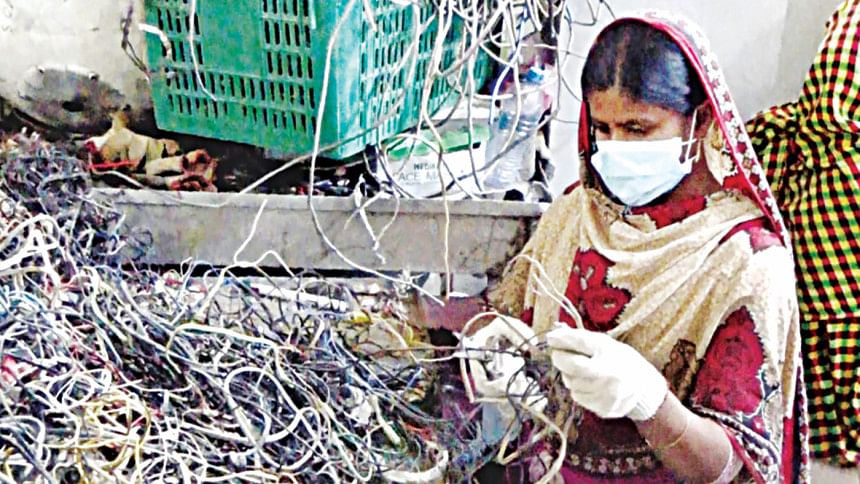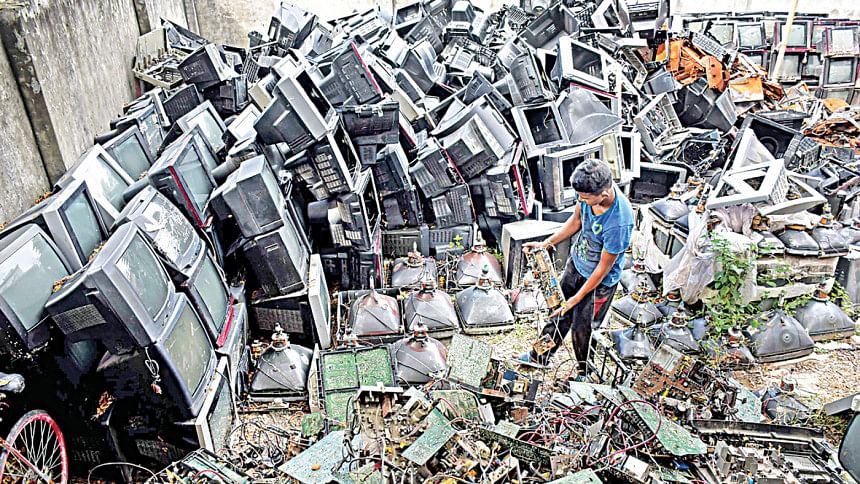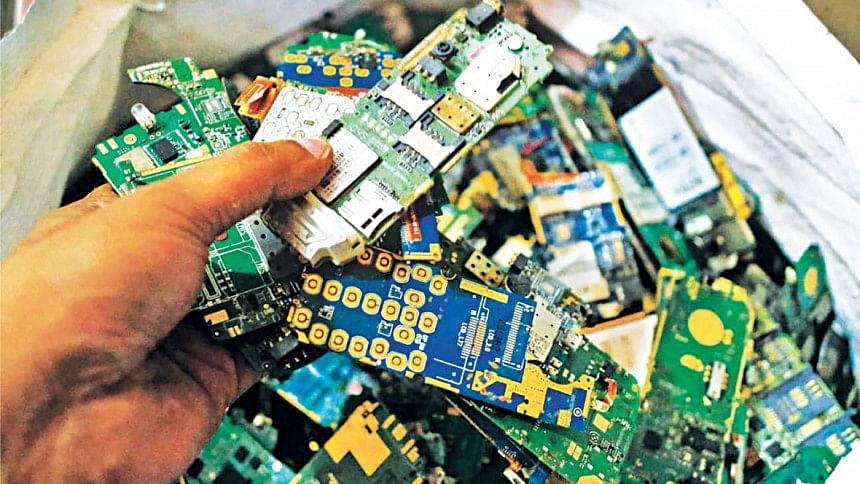Discarded devices: Where does the e-waste go?

If not on paper, there is a good chance you are reading this article on a screen. Mobile phone, tab, desktop computer, maybe even the TV if you really like it. This article, in the future, will be available on the Internet, accessible to the masses for generations to come.
Your device, though. Where will it go?
The answer is electronic waste. In short, referred to as e-waste.
The life cycle of a human being is common knowledge. However, human beings are still learning about the life cycles of all that they use. Everything that a person uses over their lifetime, for example, documents, clothes, and furniture – just to name three – will see its end at one time. The papers, fabrics, and wood used to make it will be labelled as "waste".
Likewise, think about all the electronic materials, components, tools and devices you have come across to this day. The countless batteries, the toys with motors, your first camera, the mobile phones you have used and the entire computer setup with the monitor, CPU, and printer. This is an endless list. How many have you discarded till now?
We do not think twice before tossing a low-performing AA battery into the trash bin. Just like how we do not think before buying another battery to replace the previous one. We replace our mobile phones every few years with the newest upgrade; the old computer is exchanged for a brand new laptop. With each upgrade, unbeknownst to ourselves, we push our planet towards an impending doom of environmental catastrophe.
The World Economic Forum reports that, in 2021 alone, 57.4 million tonnes of electronic waste was discarded, outweighing the Great Wall of China. Now, imagine if we lined up all the e-waste generated in 2021; perhaps one could see it from the moon.
What is even worse is that only about 12.5 percent – one-eighth – of the total e-waste generated is recycled. So, where does the rest of it go?
As I mentioned earlier, we need to observe the life cycle of an electronic product to understand the reality of how e-waste is generated and where its fate lies.
Let us take a look at my sister's laptop, for example. She had purchased the device almost five years ago, discarding another laptop she was using, which had lower specifications, and the screen was cracked at the corner. Clearly, in terms of performance, it could not keep up with the ever-advancing technology. The screen damage did not help either. She decided to chuck it in a drawer, not caring about all the parts that were intact.

Her new laptop might be good for another few years until she decides to upgrade to a newer, faster, and better model. Hence, this "new" laptop will suffer the same fate as the older one – left to rot.
Here is why this is the beginning of the end. The laptop is made up of plastic, composite, semiconductors and metals. Look it up, and you will find silicon, aluminium, copper, iron, steel, and even traces of gold on a single motherboard. Add to that the lithium-ion battery and the glass and polymer screen, and you will realise that within the topic of electronic waste, one also contributes heavily to plastic and metal waste, among others, and adds to environmental and public health deterioration.
I only spoke about what one small laptop could do. Electronic devices and appliances such as refrigerators, televisions, microwave and gas ovens, and especially office equipment contribute slowly as they have a longer life cycle. However, the impact created by "large" e-waste is equally devastating, if not more.
A number of factors have been identified as the cause of e-waste generation in Bangladesh. Rapid urbanisation, access to modern technology, increase in purchasing power, fast development of products, frequent changes in markets, and higher use of marketing strategies by manufacturers play a vital role in the generation of electronic waste.
According to a Bangladesh University of Engineering and Technology (BUET) study sponsored by the Department of Environment (DoE), in the year 2018, Bangladesh generated about four lakh tonnes of electronic waste.
The number was estimated to reach 5.5 lakh tonnes in 2020.
The volume of annual e-waste production – with the growth trend – is projected to be 12 lakh tonnes in 2025. If this goes on, Bangladesh will produce 46 lakh tonnes of e-waste in 2035. Around the country, there are markets that collect and store rejected electronic goods. Bhangariwala , and often children, go from one house to another looking to buy them for a very cheap value. After collection, these devices are broken into for smaller parts and valuable metals. For those involved in this industry, this acts as the gateway to pollutant contamination. As more and more goods are dismantled and discarded in landfill sites and water sources, the nearby communities become more prone to health and environmental hazards.

The threats posed by electronic waste impact humans directly as they breathe air, drink water, eat food and come in contact with contaminated non-biodegradable particulate matters. Cases of asthma, hearing loss, poor eyesight and forms of cancer have been found among workers, even the children. Constant exposure to such activity has stimulated infant mortality rates and put pregnant women and new-borns under severe risk.
Is there a solution to the problem? Can we tackle e-waste pollution? Even in 2022, these seem to be difficult questions to answer. However, we have to look forward.
In 2021, the Government of Bangladesh approved the Hazardous Waste (e-waste) Management Rules under the Bangladesh Environment Conservation Act, 1995. While there is a lack of information regarding the disposal and processing of electronic waste and its harmful effects on human and environmental health in Bangladesh, learning about its environmental exposures and health outcomes could provide the knowledge and opportunity to create strategies to increase awareness about effective consumption and recycling.
It is understandable if one wants to switch to a newer or better device. However, it is more important that, when making the choice, we stop to think about the consequences our lifestyles have on our home, our country and our planet.
Kazi Akib Bin Asad is the Editor of SHOUT, The Daily Star. Write to him at [email protected]

 For all latest news, follow The Daily Star's Google News channel.
For all latest news, follow The Daily Star's Google News channel. 



Comments